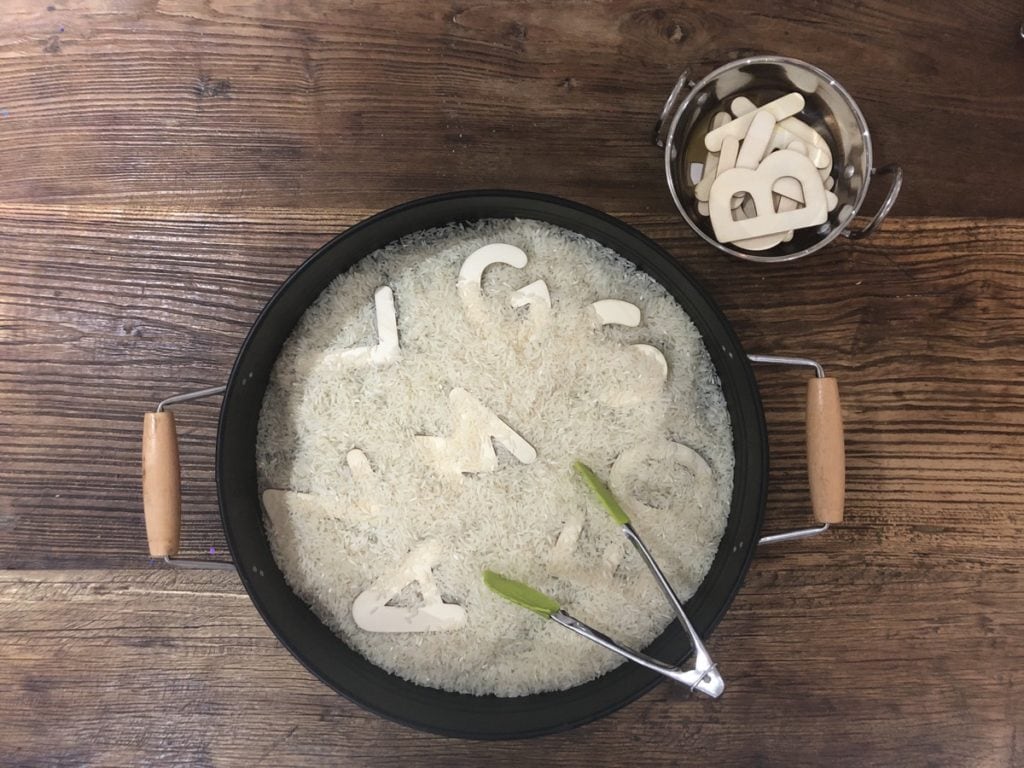Children are naturally motivated to play, and it is within play that they do most of their learning and developing. Although children are very capable of creating their own play activities, there are some things that you can do as a parent or carer to encourage and support them on this learning journey.
The preschool years are often very focused on structure, particularly literacy and numeracy, to prepare children for their transition to school (school-readiness). However, it is important to understand that play is the primary method for children of this age to learn and make connections with the world around them.
Here are 10 play-based activities and ideas that will support your preschooler and prepare them with the skills to be a lifelong learner.
Outdoor/nature play

There is nothing more beneficial for children than playing in the outdoors exploring nature and discovering the world around them. Nature play supports children to care for something other than themselves, such as flowers and animals. It provides opportunities for children to challenge themselves by engaging in risky play, encourages sensory exploration and creativity and it assists with self-regulation and management of emotions. Why not take advantage of this time by getting outside and exploring new places right on your doorstep? Check out the family walks section on Newy with Kids.
Sensory activities

Sensory activities are open-ended, versatile and can be provided using pretty much anything as a resource, such as cooking ingredients, natural resources, and loose parts. The possibilities for learning with this type of play are endless and have so many amazing benefits.
Providing opportunities for children to engage in sensory activities encourages them to develop skills such as self-regulation and management of big emotions, fine and gross motor skills (including the pincer grip in preparation for writing), as well as teaching concepts relating to science and math.
Take a look around your house (e.g. in the pantry or outside) and set-up a simple sensory activity for your kids. You will be amazed at how long they engage and play with it.
Loose-parts play
Loose parts are open-ended resources that have more than one purpose; they can be used in many different ways and provide endless learning opportunities. (Examples include pipes, wheels, log off-cuts, cardboard boxes, bottle lids, and old sheets).
Resources such as these provide children with more opportunity for learning, creativity, and problem-solving; the key elements for a successful lifelong learner. The majority of toys these days are plastic and have only one use, causing boredom and not to mention a huge impact on landfill. By using loose parts, it encourages sustainable practices by giving used items a second-life. Next time you go to throw something away, think first if it could be used as a resource in your children’s play instead.
Real-life & role-play
Role-play provides a platform for children to investigate and explore real-life concepts while building on their social skills and emotions. (Examples of this include cooking, washing the dishes, handy work, and groceries). This can be through a dramatic-play environment where children are provided with real materials (rather than plastic toys), or it can be through real-life experiences.
Experiences such as these teach children respect for resources and people, encourage creativity, and develop a deeper understanding of the world and how things work. Most children love to help, so why not involve them in your daily chores on occasion. What you may think is boring and mundane, they may find interesting and exciting, providing you make it a fun experience for all.
Provide choices & encourage independence
Children not only WANT to be in control of their own choices, but they NEED to be in order to develop independence. Activities that provide them with this opportunity are often embedded in their daily routine such as choosing what to wear, what to eat, what to play. Use these as opportunities to provide choices and encourage independence in a playful way.
Encourage literacy & numeracy in more exciting ways

So many parents focus on the importance of literacy and numeracy for pre-schoolers, which often results in boring templates and worksheets. Not only does this take away valuable opportunities to learn through play, but it also has the potential to damage their love of learning.
Why not try encouraging your child to mould or build letters, numbers or words out of play-dough, Lego, or things found in nature; create a literacy or numeracy treasure hunt in a sensory bin or outside in nature; turn it into a game such as fishing for letters and numbers; or write and post letters to somebody.
These types of activities develop fine-motor skills and letter/number recognition, but in a more playful and memorable way. Your kids may not even realise that they are learning as their focus is shifted from learning to simply having fun.
Books, books & books
Yes, it seems like a basic idea, however, books really are one of the most beneficial resources you can use to learn. With so much emphasis on technology these days, books are often overlooked and are slowly losing their value. It doesn’t matter how much a child may dislike learning, if you can find a book that targets their interests, it suddenly becomes relevant and exciting.
Another idea you can use to support your child to make sense of their world is to encourage them to write their own book (with your help of course). This again supports their literacy development, alongside their social and emotional wellbeing, and allows them to make sense of their world.
Exploring music & movement
Music, like books, has the ability to meet the needs of every individual, providing that it relates to their personal interests and taste. One great activity to encourage creativity and exploration is to paint to different genres of music (e.g. exploring different volumes, pitch, tempo…) all of which is then reflected in their artworks through different movements. By combining music and movement with visual arts, it offers a more playful and creative outlet to express oneself.
Board games & card games
This is such a fun way to support children’s learning and development without too much thought or preparation required. Some great examples include memory, dominos, Go Fish, bingo, Uno, and Who Am I. Games such as this encourage turn-taking, sharing, teamwork, following rules and directions, as well as literacy and numeracy concepts.

Another idea is to create your own board game which specifically targets your child’s interests and current areas of learning. You could use it to focus on feelings and emotions, to discuss similarities and differences among people, or to teach a specific topic.
Building, construction & puzzles
Never underestimate the value of building and construction play. It provides so many amazing learning opportunities, particularly related to maths and science concepts (e.g. measurement, space, shapes, gravity, problem-solving).
Try to provide a variety of building resources consisting of different sizes, shapes, materials and weight to extend on your child’s learning in a more versatile way. Resources could include cardboard boxes; pipes; plastic bottles, containers and lids; books; sticks and stones, as well as wooden blocks.
All of the above activities provide opportunities for developing knowledge and skills that can be used throughout all aspects of life. These include problem-solving, sharing/turn-taking, literacy and numeracy, science and maths concepts, values such as respect and sharing, teamwork, creativity, self-regulation and managing big emotions, appreciation and respect of nature, ability to make choices and be independent, fine-motor and gross-motor skills, social skills and following rules. All of which are essential life skills to have, for preschool, school and beyond.
With many more days spent at home, now is the perfect time to give these activities a try. Take a look around your home and try to utilise what you have as resources. Remember that learning should be interesting, engaging and fun, rather than structured and boring. Learning through play really is the best way!
Do you have younger kids? Check out the article 5 Play-Based Activities for Babies & Toddlers That You Can Do at Home also written by Bianca.

Bianca grew up in Newcastle and loves everything about this wonderful city. A mum of two under 2 1/2, she cherishes the crazy and challenging, yet beautiful days that she gets to share with her children. On her days off she enjoys exploring new places together and creating fun and engaging play experiences, which she shares on her instagram account @mila.and.micah. When Bianca isn’t being Mum to her two, she is busy managing a local community-based childcare centre. She has 10 years experience as an Early Childhood Teacher and Director, and is passionate about play-based learning for the early years.
